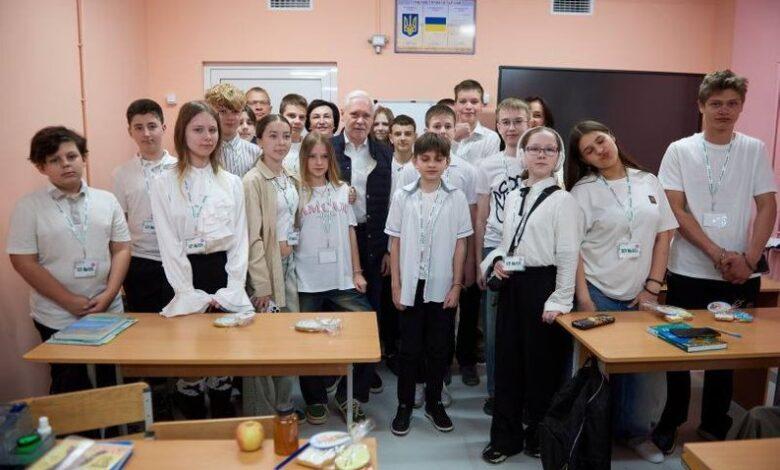Education underground: the fourth underground school was opened in Kharkiv

In 2025, Kharkiv continues to remain not only one of the most affected cities of Ukraine from regular shelling by Russia, but also an example of extraordinary human adaptation to war. In a city that lives under the constant threat of rocket attacks and airstrikes, the opening of each educational institution is not just an educational step, but an act of direct resistance. And when classrooms are moved underground, it is no longer a metaphor for the “school of life”, but a literal architecture of survival, hope and perseverance. On April 22, on the day of another mass attack by Shaheds, the fourth underground school opened in Kharkiv, located in the Shevchenkiv district.
What is known about the new school
The school is built at a depth that provides the highest level of protection against a direct hit by missiles or debris. In the message of the Kharkiv City Council is emphasized, that the institution organizes two-shift training for students of five schools at once, whose infrastructure is either destroyed or unsuitable for a full-time stay in the conditions of a long-term threat. The institution is designed for a thousand students, and at the time of its launch, 808 children study there. These are children who go underground every day not because they dream of original interiors, but because it is there that their studies are physically safe.
Inside the institution there is a full-fledged school complex: nine classes for elementary school, eight for middle and high school, a dining room, an assembly hall, spaces for recreation, a medical office, as well as common areas where children can spend time between lessons. All premises are fully adapted for inclusive education, which allows children with hearing, vision, musculoskeletal disorders to study. This is an important point both from the point of view of humanism and because the war increases the number of children with acquired forms of disability every day.
The new school does not look like a bomb shelter or a modular structure adapted to lessons. This is a full-fledged school, built in an underground space taking into account hygienic, sanitary, educational, acoustic and logistical requirements. Lessons in it take place according to a typical schedule: with a morning bell, breaks, school uniform, homework.
On weekends, the underground school works no less actively: preparatory courses for future first-graders, career guidance events, and clubs are held here. It is a space in which life does not stop, even when there is air anxiety from above.
According to the mayor of the city Igor Terekhov, every day they try to enroll more than 80 new children in the school. The district in which it is located – the central part of Kharkiv – is densely populated, and most of the families left in the city are desperately looking for an opportunity to return their children to full-time education without risking their lives. In fact, the underground school has become one of the most sought-after public facilities in Kharkiv over the past year.
The construction of the new school cost the city budget 107 million hryvnias. Part of the material and technical support was provided by private initiatives — in particular, the Kharkiv IT-cluster, which provided computer equipment for computer science offices. This is another example of how business, city government and the community come together not just to survive, but to create a new model — education in wartime conditions.
Online education, which was actively implemented in 2022-2023, turned out to be ineffective for a large number of children, especially younger students. Psychological fatigue from being constantly at home, frequent sitting in the corridors during anxiety, lack of interaction – all this made the physical school environment not only desirable, but also vital.
New schools are in the process
The city government does not plan to stop there. At the same time, the construction of three more underground schools has already begun in the Saltiv district of Kharkiv. This is a direct recognition that the threat of war does not disappear, and therefore the educational infrastructure must adapt not to post-war, but to wartime. Schools in Ukraine can no longer be just a place to transfer knowledge — now they must also protect, sustain and build resilience.
The appearance of another underground school in Kharkiv demonstrates the practical response of the city authorities to the challenges caused by prolonged hostilities. The educational infrastructure changes under the pressure of the security situation, and the decision to organize the educational process in underground premises is part of the adaptation policy, not a temporary exception. The use of sheltered facilities for learning allows partial restoration of face-to-face learning in areas where other formats remain unavailable.
Such facilities, despite the complexity and cost of implementation, can become a stable solution for those regions where the security situation does not allow a return to traditional education. The Kharkiv experience should be considered as a model that can be adapted in other cities that are under constant threat of shelling.





